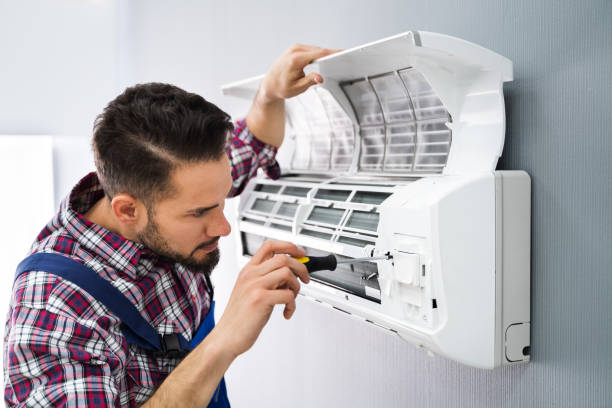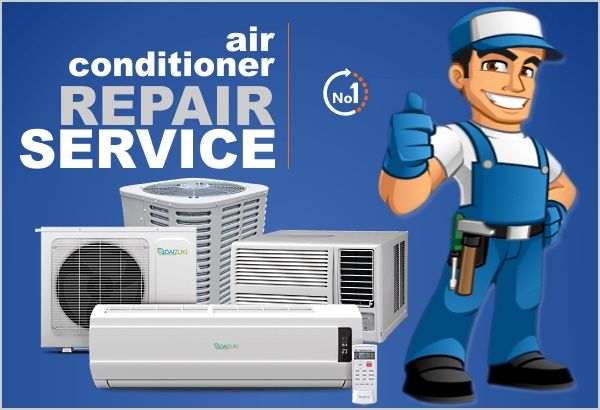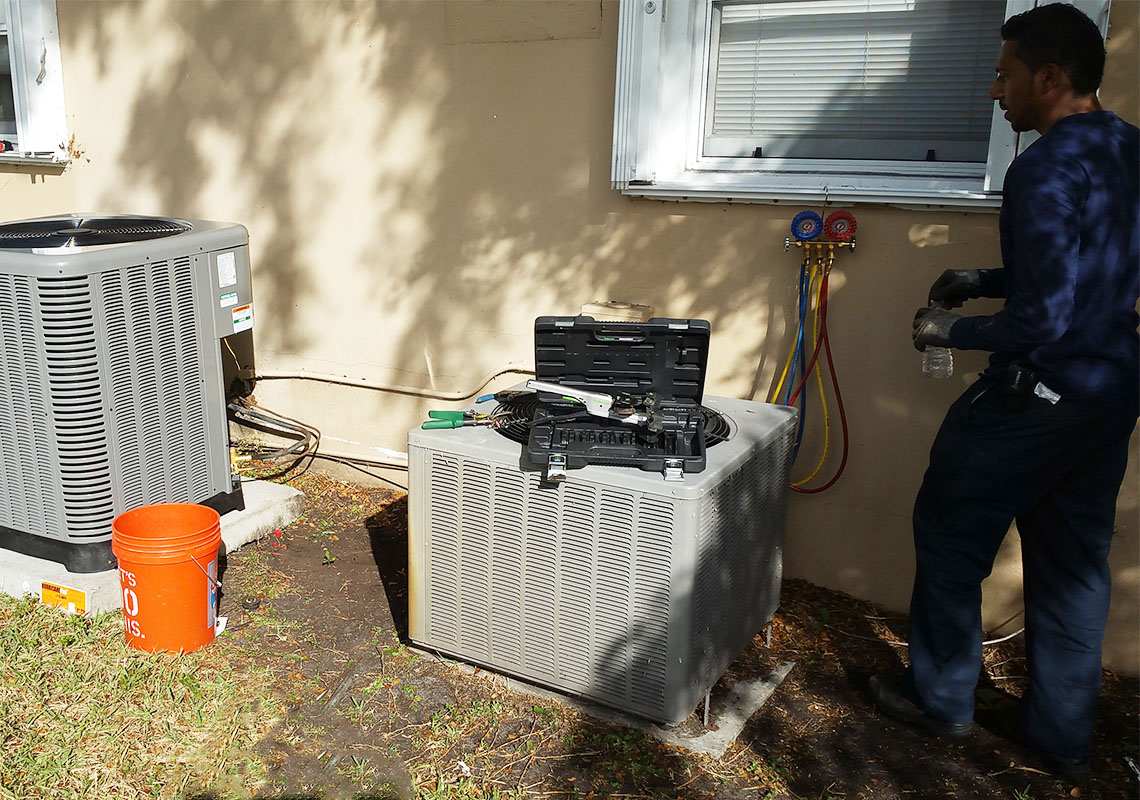Commercial AC Repair Near Me: Air Conditioning Repair Scams to Look Out For
Hvac Servicing Near Me: Efficient Climate Control Systems Are Vital For Indoor Convenience And Energy Cost Savings
Components and Systems: The A/c Symphony
Ever question what truly manages the climate control in your home or office? It's even more than simply a box humming outside. We're discussing a sophisticated interplay of elements, a veritable symphony of engineering developed to preserve your comfort, come rain or shine, and even the most blistering heatwave. Comprehending these individual parts, and how they coalesce into a unified system, is vital for any property owner or center manager. Consider it like a body: each organ has a crucial role, but it's their collective function that keeps us alive and flourishing.
The Core Players: What Makes it Tick?

At the heart of a lot of property and light commercial HVAC setups, you'll find a number of crucial players. Do you actually know what each one does? Let's break down the vital cast:
- Furnace: The heating powerhouse, normally fueled by natural gas, propane, or electrical power. It warms the air that then flows throughout your area.
- Air conditioning system: The cooling champion, getting rid of heat and humidity from indoor air through a refrigerant cycle.
- Ductwork: The circulatory system of your heating and cooling, a network of channels that distributes conditioned air to numerous rooms and returns stagnant air for reconditioning. Without correctly sized and sealed ducts, even the most effective system can falter.
- Thermostat: The brain of the operation, allowing you to set and maintain wanted temperature levels. Modern thermostats are capable of incredible feats, from Wi-Fi connection to discovering your choices.
Beyond the Essentials: Integrated Systems
While the furnace and air conditioning unit are typically distinct systems, they regularly share typical aspects, forming an integrated system. The very same blower fan within the heating system often moves air for both heating and cooling. This seamless combination is what makes a modern-day a/c system so efficient and user-friendly. Think about the classic scenario: a sweltering summertime day paves the way to a surprisingly chilly night. Your system, if correctly developed, shifts effortlessly from cooling to heating, guaranteeing continuous comfort without you lifting a finger. It's really a marvel of contemporary convenience innovation.
Improving Air Quality: More Than Simply Temperature
Beyond merely heating and cooling, contemporary heating and cooling options often include elements targeted at enhancing indoor air quality. Are you conscious of the unnoticeable dangers hiding in your air? From allergens to toxins, an excellent system actively fights them. This can consist of sophisticated purification systems, humidifiers to add moisture in dry environments, or dehumidifiers to draw out excess humidity. Some systems even integrate UV lights to eliminate airborne pathogens. It's about producing a holistic environment, not just a comfortable temperature. After all, what good is convenience if the air you breathe is subpar?
Heating and Cooling Concepts: The Unseen Ballet of Comfort
Ever question why one space seems like a sauna while the next is an icebox, in spite of your thermostat's fervent prayers? The answer typically depends on a nuanced understanding of heating and cooling principles, a subtle dance of energy transfer that determines our indoor comfort. It's not simply about cranking up the AC or stoking the furnace; it's about managing the flow of heat, that consistent tourist always seeking balance. Think about it like water streaming downhill-- heat constantly moves from warmer areas to cooler ones. This fundamental truth underpins every element of effective a/c system operation, yet it's regularly ignored, resulting in relentless pain and, honestly, wasted energy.
The Elusive Even Temperature
The most typical frustration house owners voice centers on uneven temperatures. You change the thermostat, wishing for a blanket of comfort, only to discover one space sweltering while another shivers. Why does this take place? Frequently, it's a sign of incorrectly sized or improperly well balanced ductwork. Think of a garden hose attempting to water a whole lawn; some locations get drenched, others remain parched. If your ductwork isn't developed to deliver the right volume of conditioned air to each area, hot and cold areas become an unavoidable truth. A common mistake is presuming that just including more vents will fix the issue. In reality, it can exacerbate it by interrupting the fragile balance of atmospheric pressure within the system. An a/c specialist worth their salt will perform a Manual J load computation, a detailed analysis that determines the exact heating and cooling requirements of each room, taking into consideration factors like window size, insulation, and even the number of occupants. Without this fundamental action, you're essentially flying blind.
Tricks of the Trade for Optimum Effectiveness
- Zoning Systems: For supreme control and effectiveness, consider a zoning system. This allows you to divide your home into distinct temperature level zones, each with its own thermostat. No more heating or cooling unoccupied spaces! It resembles having several mini-HVAC systems customized to your lifestyle.
- Duct Sealing: Dripping ducts are well-known energy burglars. A considerable portion of conditioned air can leave through unsealed joints and holes before it even reaches your home. Professional duct sealing with mastic or specific tape (not just ordinary duct tape, which stops working quickly) can significantly improve performance and eliminate phantom drafts.
- Insulation's Role: Your home's insulation serves as the bouncer for heat, avoiding it from crashing the party in summertime and leaving in winter. Is your attic adequately insulated? Are your walls mere sieves for thermal energy? An easy examination can expose substantial chances for improvement.
- Fan Settings Matter: Numerous homeowners just set their fan to "auto." While generally great, consider running your fan continuously on a low setting, specifically in shoulder seasons. This helps distribute air, lowering temperature stratification and making your home feel more regularly comfortable, even if the primary heating or cooling isn't actively running.

Comprehending these basic heating and cooling principles empowers you to make educated choices about your home's convenience and energy intake. It's not simply about repairing a damaged unit; it has to do with orchestrating a symphony of heat and coolness, making sure every note is played just right.
The Breath of Life: Ventilation and Air Quality
Ever walked into a room and felt that immediate stuffiness, that sense of recycled air sticking to your lungs? It's a common experience, a subtle yet consistent pain that often goes unaddressed. Lots of property owners, concentrated on cooling and heating, overlook the crucial role of ventilation in their a/c system. It's not almost temperature level; it's about the very air we breathe. Think about your home as a living organism; without correct air flow, it suffocates, trapping contaminants, allergens, and even stale smells. This oversight can cause a host of indoor air quality issues, a quiet enemy eroding convenience and potentially impacting well-being.
One of the most considerable difficulties property owners face in keeping remarkable indoor air quality centers on the build-up of microscopic air-borne particles. These unnoticeable intruders, varying from allergen and pet dander to mold spores and volatile organic compounds (VOCs) off-gassing from furnishings, flow constantly without sufficient air exchange. Picture attempting to clean up a dusty room by simply moving the dust around; that belongs to recirculating stagnant air without introducing fresh, filtered air. This constant re-exposure can worsen breathing conditions, trigger allergic reactions, and usually lessen the feeling of a clean, healthy home. However what can be done to truly clarify?
Beyond the Standard Filter: Advanced Air Filtration
While standard heating system filters capture larger particles, they often fail when it comes to the truly minute pollutants. This is where the critical homeowner thinks about upgrading their HVAC system's air filtering. Have you thought about a MERV 13 or greater filter? These pleated powerhouses can trap a considerably higher percentage of airborne particles, including germs and even some viruses. The journey to beautiful air doesn't end there. For a genuinely detailed method, UV germicidal lights incorporated into your ductwork offer an extra layer of defense, reducing the effects of airborne pathogens as they pass through. It resembles having a microscopic bouncer for your air, ensuring just the cleanest particles make it into your living area. And for those with persistent smell concerns or chemical level of sensitivities, a whole-house triggered carbon filter can be a game-changer, absorbing gaseous toxins that even the finest particle filters miss. It's about proactive defense, not reactive relief.
- Check and change air filters quarterly, or more regularly if you have animals or allergic reactions.
- Think about a whole-house humidifier or dehumidifier to manage indoor humidity levels, which can affect mold development.
- Ensure appropriate sealing of ductwork to avoid unfiltered air from going into the system.
- Use exhaust fans in kitchen areas and bathrooms to get rid of wetness and cooking smells at their source.
Did you understand that just opening windows for a couple of minutes each day, even in winter, can considerably improve indoor air quality by diluting contaminants? It's a basic, cost-effective trick that numerous overlook. Strategically positioned indoor plants, such as spider plants or peace lilies, can act as natural air cleansers, absorbing particular contaminants from the air. While they will not replace a robust ventilation system, they use a charming, green complement to your indoor air technique. The objective is to create an environment where the air is not just comfortable in temperature, however genuinely invigorating to breathe.
Installation and Upkeep: The Unsung Heroes of A/c Longevity
Ever question why some HVAC systems purr like contented kittens for decades while others sputter and cough their last breath far too quickly? The secret, dear reader, typically lies not in the initial purchase, however in the meticulous dance of installation and the thorough rhythm of upkeep. It's a tale as old as time, or a minimum of as old as a/c itself: a system, no matter how advanced, is just as good as its setup and subsequent care. An improperly installed unit can cause a waterfall of issues, from ineffective operation that drains your wallet much faster than a leaky faucet to early element failure. Imagine attempting to run a marathon with ill-fitting shoes; you may complete, however not without significant discomfort and prospective injury. Your a/c system faces comparable adversities when not properly integrated into your home's distinct thermal envelope.
Think about the airflow. A typical oversight during setup, and one that triggers unknown headaches, revolves around correct ductwork sizing and sealing. It more info resembles trying to drink a milkshake through a tiny, punctured straw-- you're applying a great deal of effort for very little reward. Undersized ducts restrict air flow, forcing the blower motor to work harder, taking in more energy, and reducing its life expectancy. Leaky ducts, on the other hand, resemble tossing cash out the window, actually, as conditioned air leaves into unconditioned areas. Did you understand that as much as 30% of a home's heating and cooling energy can be lost due to leaking ducts? It's a shocking figure, often overlooked, and easily corrected with proper sealing methods utilizing mastic or customized metal tape, not simply the flimsy cloth-backed duct tape everyone wrongly calls "duct tape."
The Rites of Regular Maintenance
So, you've got a perfectly installed system. Now what? The journey does not end there; it simply begins a brand-new chapter: maintenance. Think about your heating and cooling system as a high-performance automobile. Would you ever avoid oil modifications or tire rotations? Of course not, since you comprehend the long-term consequences. Ignoring your Heating and cooling system's yearly tune-ups is a gamble you're unlikely to win. These aren't just approximate visits; they are essential preventative procedures. A technician checks refrigerant levels (the lifeline of your system), cleans coils (those unsung heroes of heat exchange), examines electrical connections (avoiding prospective fire dangers), and lubricates moving parts. It's throughout these sees that little issues, quickly corrected, are caught before they blossom into pricey breakdowns. A filthy evaporator coil, for example, can reduce effectiveness by 5-10%, forcing your system to work harder to attain the preferred temperature level. It resembles trying to breathe through a clogged up nose; everything becomes harder.
Here are a couple of expert insights to keep your system humming:

- Filter Skill: Modification your air filter every 1-3 months, particularly if you have animals or allergies. A clogged filter is a significant air flow impediment, reducing performance and putting strain on your system.
- Clear the Condensate Drain: Regularly pour a cup of distilled vinegar down your condensate drain line. This avoids algae and mold growth that can block the line, causing water damage and system shutdown.
- Outdoor Unit TLC: Keep the area around your outdoor condenser system clear of particles, leaves, and overgrown plants. A foot or 2 of clearance on all sides guarantees appropriate air flow, which is critical for effective heat dissipation.
- Thermostat Knowledge: Think about updating to a programmable or wise thermostat. These devices can discover your habits and optimize temperature settings, saving energy and extending the life of your system by lowering unnecessary cycling.
Keep in mind, a little proactive effort in setup and upkeep goes a long method in ensuring your a/c system provides consistent convenience and performance for many years to come. It's not almost comfort; it's about protecting your financial investment and ensuring comfort.